Whether as a tourism hub or a destination in itself, Naga boasts of the best amenities and facilities for the most intrepid of travelers. Home to Magsaysay Avenue, Bicol’s lively and wholesome entertainment district, Naga offers only the best that Bicol has to offer.
Visitors planning to travel to Bicol and learn more about Naga’s historical and natural attractions can contact the Naga City Tourism Office by email (tourism@naga.gov.ph).
Featured Sites
Going on a tour? Our local travel and tour agencies can help you out, whether travelling in small or large tour groups.
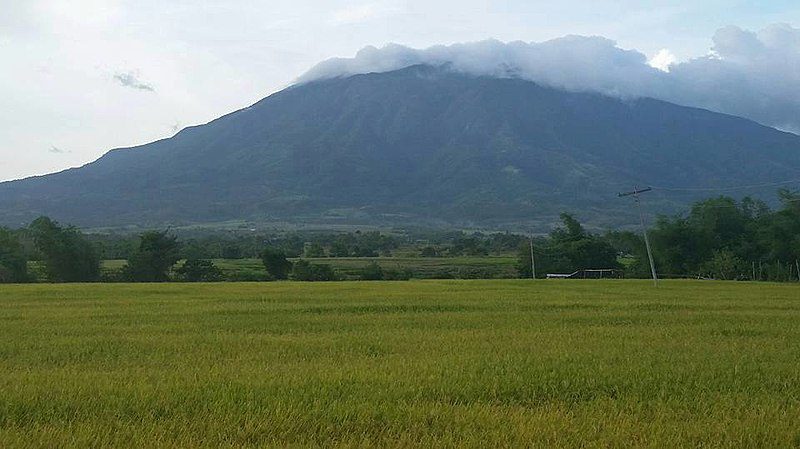
Naga’s charm as a pilgrimage city and its interesting tourist destinations make it one of the most visited cities in the Philippines. From old churches built during the Spanish colonial era to pristine Mt. Isarog Natural Park, Naga never fails to amaze its visitors. A world-class wakeboard resort nearby also beckons sports buffs and the more adventurous at heart. For the modern adventurer, Naga offers everything from challenging mountain treks to world-class wakeboard resort which promises to leave hearts pounding and the adrenaline rushing. Naga is also the jump-off point to Bicol’s many natural attractions like the white-sand islands of Caramoan, the whale-sharks of Donsol, and the island-gem of Calaguas.
To know more on how to reach other destinations in Bicol from Naga, please visit this page.
CULTURAL ATTRACTIONS
Naga as a religious center has been dubbed as a pilgrimage city, with the miraculous image of Our Lady of Peñafrancia as the center of its people’s faith and devotion. A walking tour of its churches and Spanish colonial landmarks will bring the visitor down an awe-inspiring memory lane.
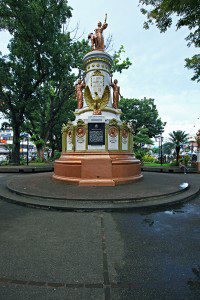
PLAZA QUINCE MARTIRES
Located in the center of downtown Naga, it is home to a monument that honors the 15 Martyrs of Bicol. It was on January 4, 1897 or barely 5 days after the National Hero –Dr. Jose P. Rizal – was executed when the 11 prisoners from Bicol were also executed on the same field in Bagumabayan (now Luneta). The four others had either died in prison as a result of torture or while in exile in the island of Fernando Poo (or Fernando Pó), off the coast of Africa. The monument was built on November 29, 1926 during the American occupancy.
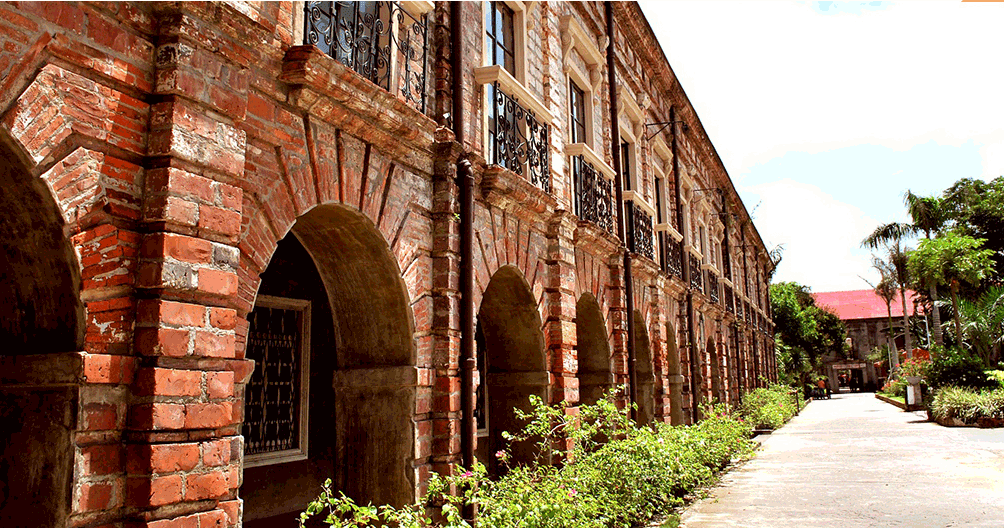
HOLY ROSARY MINOR SEMINARY
The alma mater of Bicol patriots and heroes, this Spanish-era structure constructed of bricks and tiles in 1785 within the Cathedral compound was originally built as vocation house. It soon emerged as the center and wellspring of ecclesiastical education in the Bicol Region. It underwent renovations but has retained its district colonial style and ambiance. It was declared by the National Historical Institute as a National Historical Landmark on January 29, 1988. The first Filipino bishop, Bishop Jorge Barlin, who hails from Bicol, finished his studies in this seminary. Prominent Bicolano hero Jose Ma. Panganiban also went to this seminary.
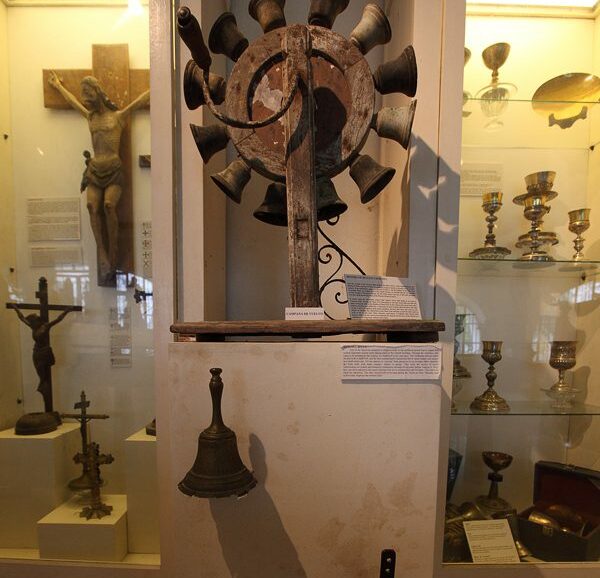
MUSEO DEL SEMINARIO CONCILLIAR DE NUEVA CACERES
This museum is located inside the Holy Rosary Minor Seminary and showcases the memorabilia of prominent Bicolano bishop – Jorge Barlin—and his old scholastics records and books. The museum also houses archival materials like the ancient burial jars of Bicolanos. Other museum of Bicol artifacts, culture and history are the museum of the University of Nueva Caceres, the Ateneo de Naga Museum and the Our Lady of Peñafrancia Museum.

SAN FRANCISCO BELL TOWER
The bell tower of San Francisco Church is one of the very few remnants from the old edifice of the San Francisco Church that mutely witnessed the historic event on September 17, 1898, when guerillas led by Elias Angeles and Felix Plazo besieged Governor Vicente Zaidin and the remaining Spaniards in Bicol, who were then at the church premises for the Peñafrancia fiesta. Despite the bloody encounter, the rebels harmed none of the Spanish women and children. The Spanish governor later signed the papers of capitulation which marked the end of 300 years of Spanish regime in the Bicol Region.
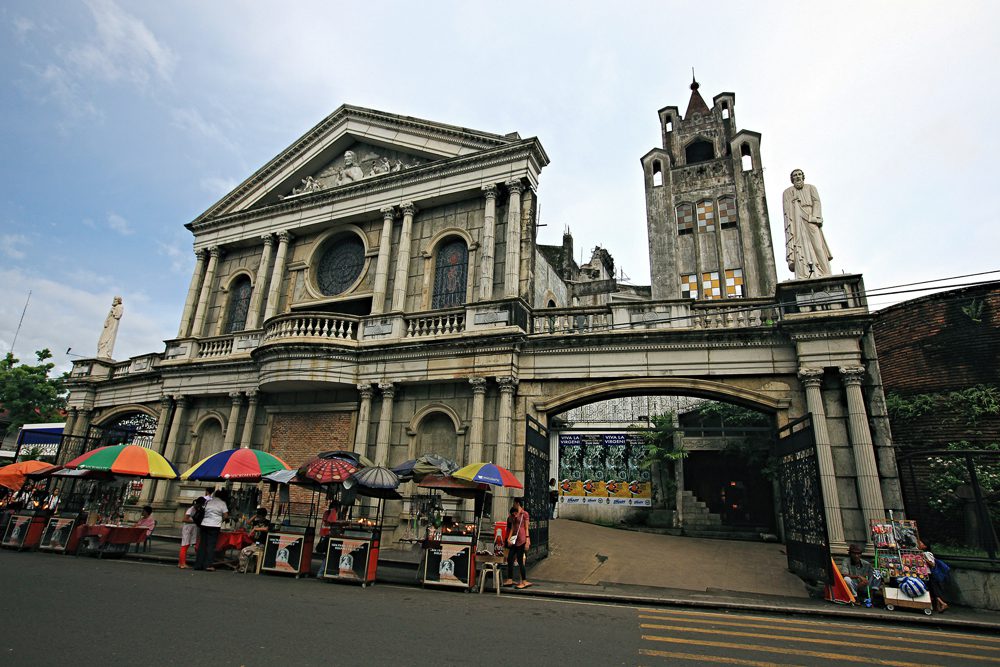
SAN FRANCISCO CHURCH
Constructed in the 17th century on the riverbank of Naga River which cuts through the city, this church’s infirmary and basement served as interrogation and torture halls of Filipinos who were arrested during the peak of the Filipino-Spanish War in 1898. For the colonial masters, the Church was used as a fortress refuging 500 people during the attacks of Filipino revolutionaries Elias Angeles and Felix Plazo in September 1898. Accepting defeat to the Angeles-Plazo forces, it is in this church’s citadels that then Civil Governor of Camarines drafted his letter of surrender consequently offering the Province of Ambos Camarines to the Filipinos. The church grounds is also rumored to have once housed the oldest hospital in Southeast Asia.
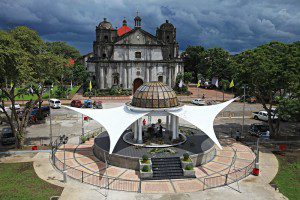
NAGA METROPOLITAN CATHEDRAL
The largest church in Bicol, it is considered to be the mother of all cathedrals in the region. With its official name “Naga Metropolitan Cathedral of Saint John the Evangelist”, this cathedral is one of the oldest cathedrals in the Philippines. The original structure was built near the Naga River (the location of Naga’s bustling public market) but was destroyed by a strong earthquake in the 18th century. Every September, during the Peñafrancia Fiesta, the image of Our Lady of Peñafrancia is transferred to the Cathedral from the Basilica Minore, the image’s home, a religious event commonly referred to as “Traslacion”. Millions of devotees all over the globe flock to Naga for the nine-day novena before the image is returned to her home via the Naga River in the Fluvial Procession.
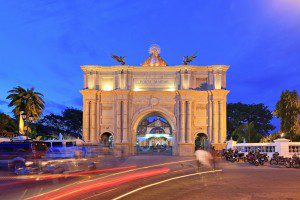
PORTA MARIAE
Celebrating the 300 years of the Bicolano devotion to Our Lady of Peñafrancia, this commemorative arch was built and formally opened on September 9, 2010. The arch, 18 meters long, 4 meters wide and 11 meters high, is a symbolic gate which imbues the journey of Marian devotion in Bicol, built on testimonies of miracles witnessed by the original native devotees called “cimarrones” through generations, as the devotion spread in other parts of the country and the world.
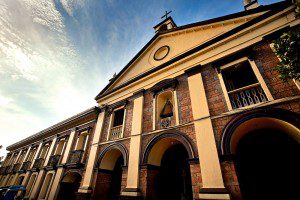
PEÑAFRANCIA SHRINE
The original home of the Nuestra Señora de Peñafrancia was made of local materials in 1710 after Fr. Miguel Robles de Covarrubias brought the devotion to Our Lady of Peñafrancia to Bicol. The construction of the present structure was completed in 1750. Its bell, donated by a wealthy Chinese trader Don Simon Tuangqui during its reconstruction in 1864, still tolls on its belfry today.
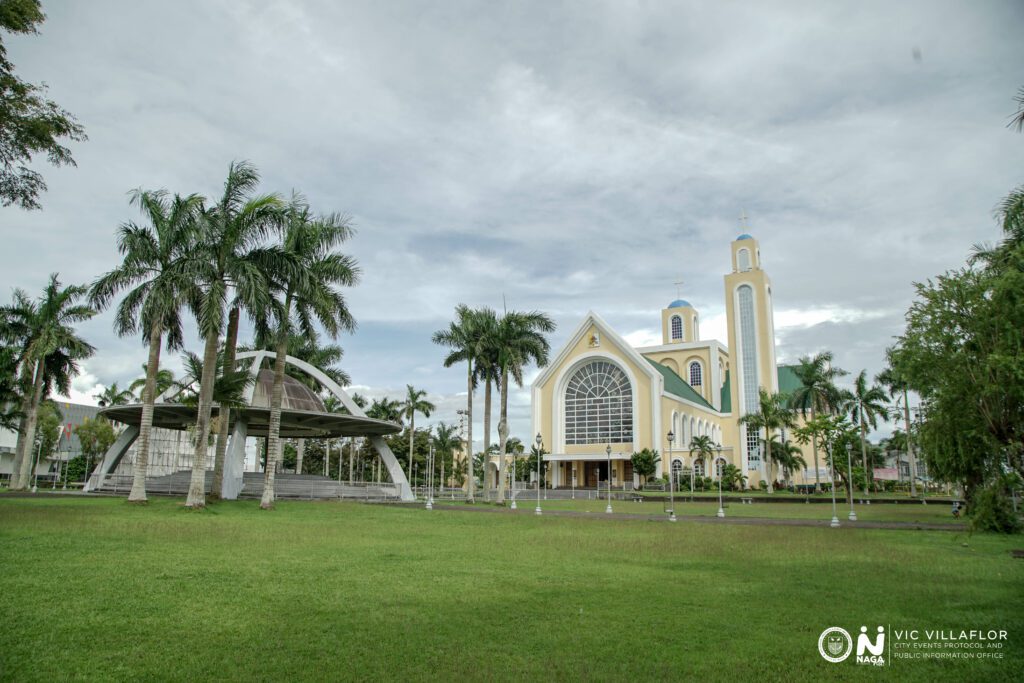
PEÑAFRANCIA BASILICA MINORE
Construction on the home of the Nuestra Señora de Peñafrancia, dearly called by her devotees as “Ina” (Mother) started in 1981 and was completed in 1985. The original image sculpted in 1710 was commissioned by Fr. Miguel de Covarrubias who, after moving to the Philippines from Spain and surviving an illness after praying to Our Lady of Peñafrancia, devoted himself to the Virgin Mary. Millions of devotees around the world visit this church every September to celebrate their faith and devotion to the blessed Virgin.
NATURAL ATTRACTIONS
In Naga, there’s always something for everyone. Majestic Mt. Isarog offers visitors the chance to experience nature at its best. The city’s eco-adventure tourism sites in its upland barangays (by the foot of the mountain) has become very attractive to mountain trekkers and backpackers who favor mountain climbing, bird watching, and splashing in the cool waters of waterfalls and hot springs.
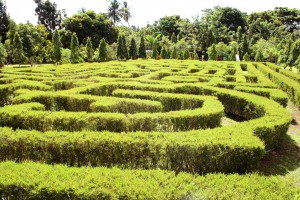
NAGA CITY ECOLOGY PARK
A five-hectare sprawl of tropical greenery, the park showcases various exotic plants, palms, an eco-walk maze, topiary garden, an orchid and mini-forest. Walkways, lawns, and pavilions provides for family picnics, stroll, and undisturbed appreciation of nature’s beauty.
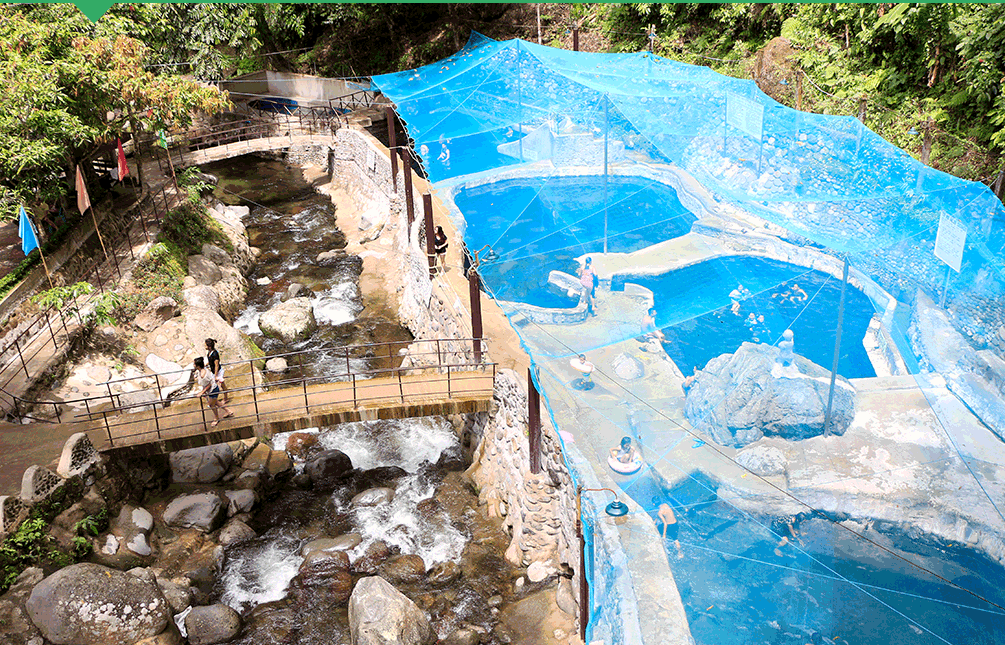
PANICUASON HOT SPRINGS RESORT
This is one of Bicol’s secret hideaways. Located at the bottom of a forest river ravine accessible via a private road, this resort is smack at the center of the teeming rain forest of Mt. Isarog. Only 30 minutes away from downtown Naga, the resort is a sight to behold, a virtual jungle paradise of ancient trees and giant ferns minus the wild animals. The resort is composed of several natural pools with temperatures ranging from a cold 20 degrees Celsius to a steaming 39 degrees Celsius. Frequented by local and international visitors, it has also been featured on national TV shows. A day or two at the hot springs resort will surely uplift one’s spirit and soothe aching and weary muscles with hot spring water that emanates from the earth’s bowels.
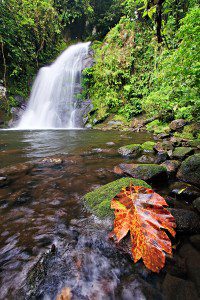
MT. ISAROG NATURAL PARK
The highest forested peak in Southern Luzon rising at 1,966 meters above sea level, this dormant volcano serves as open sanctuary to many plants, birds and animals that are known to reside in Luzon. Its 16 major rivers and 30-something waterfalls provide potable water to 15 towns and cities of Camarines Sur. The travelers’ guide “The Lonely Planet” lists it as an interesting destination for trekkers and nature lovers. Declared as a national park by President Manuel Quezon in 1937, Mt. Isarog has been the subject of many researches because of its high concentration of endemic flora and fauna.
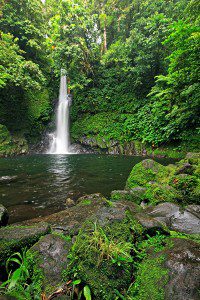
MALABSAY FALLS
Nestled on the shoulders of Mt. Isarog, this body of water is one of the wonders of Mt. Isarog National Park. It is 40 feet high with crystal clear cold water cascading down a pond where hikers and mountaineers relax or take a break for a swim. The falls is located just within the boundaries of the Mt. Isarog Natural Park, and is a popular destination for excursions.

NABONTOLAN FALLS
Resting within the protected area of Mt. Isarog National Park and accessible through the Naga City trail, this waterfall offers a breathtaking refuge from the busy city life and allows one to commune with nature. The rough trail going into the falls makes it quite an adventure getting in.
URBAN ATTRACTIONS
A mixture of heritage sites and modern amenities is an indication of the city’s diverse culture, its past and its future.
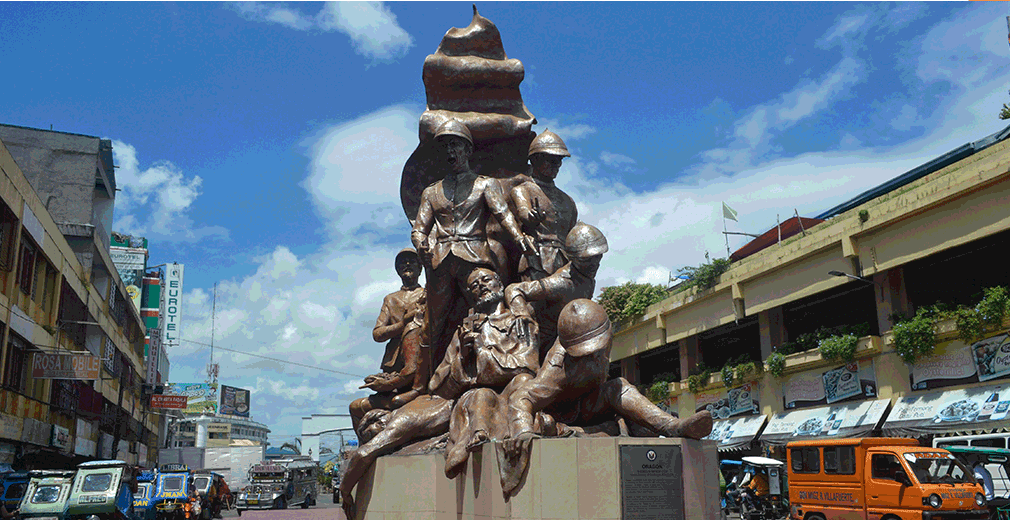
PLAZA DE NUEVA CACERES
This newly-built monument and plaza was for the celebration of the 62th founding anniversary of the City of Naga in 2010. Plaza de Nueva Caceres commerates the history of Naga City (formerly called Ciudad de Nueva Caceres) starting from its pre-colonial roots up to the Spanish rule when it became one of the four oldest cities and seats of powers of the Spaniards. The monument’s inviting surroundings and relaxing plaza, meanwhile, shows how Naga flourishes and becomes one of the modern cities in the country and in the Philippines.
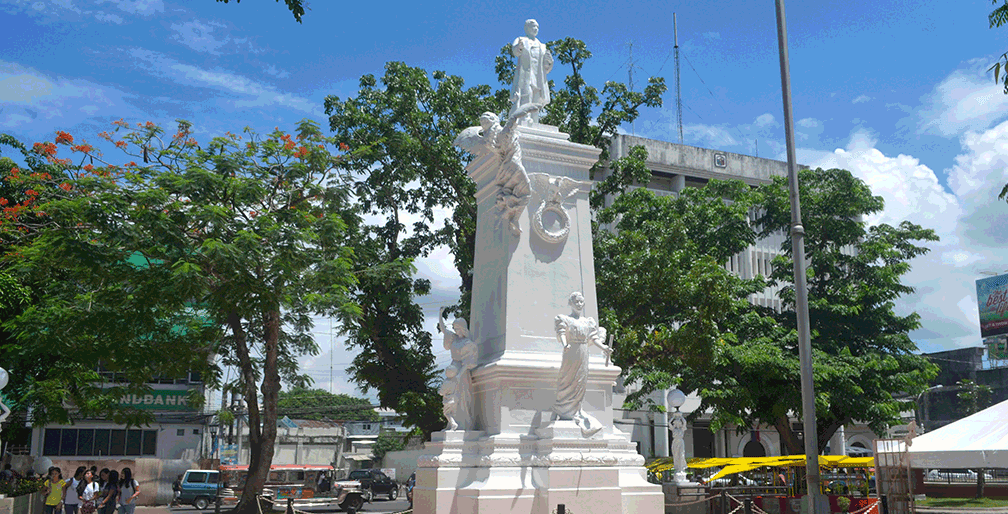
PLAZA RIZAL
This monument-cum-park ideally located at downtown Naga was built in honor of the national hero, Dr. Jose Rizal. This is known locally as the center for public debates and discussions, family picnic gatherings and public recreation and relaxation spot.

PLAZA QUEZON
Named in honor of the great President of the Philippines Manuel L. Quezon, this plaza which is adjacent to the famous Plaza Rizal in downtown Naga, is where parades of all types are held and reviewed by prominent guests and officials of the city. It is also a favorite site for concerts of popular bands and other performers in the country, including 6 Cycle Mind, Siakol, Parokya ni Edgar, Moonstar 88, Blackjack, and others.

PLAZA BARLIN
Located at Barlin and Arana Streets fronting the Naga Metropolitan Cathedral, the plaza and the monument was constructed in honor of Msgr. Jorge Barlin, the first Filipino and Bicolano Bishop of the Roman Catholic Church in the Philippines. Barlin, a native of Baao, Camarines Sur, is also one of the fifteen martyrs who bravely stand for and died for the sake of the Filipinos.
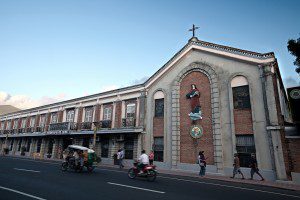
UNIVERSIDAD DE STA. ISABEL
Formerly called Colegio de Sta. Isabel, this Catholic Vincentian university is owned and run by the Daughters of Charity in Naga City, Philippines. It was established by the first five Daughters of Charity that arrived in the Philippines in January 1868 with Bishop of Caceres, Most Rev. Francisco Gainza, O.P., the founder of the Colegio through the royal order of Queen Isabella II of Spain. The school, which was the first normal school for women in the Philippines and Southeast Asia, was inaugurated on April 12, 1869. It achieved its university status in 2001.
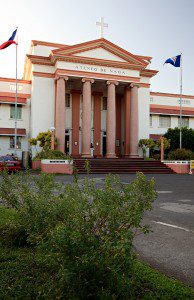
ATENEO DE NAGA UNIVERSITY
Established in 1940, the university is the only Jesuit institution in Southern Luzon. During World War II, the school was converted into a prison camp by the Japanese Imperial Forces. In 1979, the College and the High School departments were the first in Camarines Sur to be accredited by the Philippine Accrediting Association of Schools, Colleges, and Universities (PAASCU). On February 20, 1999, the Commission on Higher Education conferred the Ateneo de Naga its university status.

RAUL S. ROCO LIBRARY
Named after the beloved Bicolano statesman, this learning facility is home to over 30,000 book titles alongside its being a hub with online access to other libraries in the country. It also houses the memorabilia of the late Senator Raul S. Roco and the Naga City Hall of Fame, where the various plaques and trophies representing international, national, and local awards received by the city government are displayed. It also houses education and culture-related government offices agencies like the Arts, Culture and Tourism Office, Publication Office, School Board, Naga City Governance Institute, i-Governance Office, and the Center for the Blind.
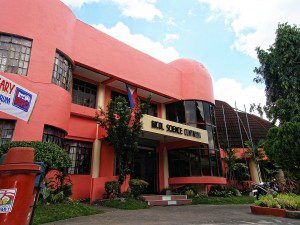
BICOL SCIENCE AND TECHNOLOGY CENTRUM
The only LGU-operated science and technology one-stop educational attraction in the Bicol Region. It is a popular landmark visited every month by thousands of students, children and their parents on educational field trips. Visitors come from different municipalities and provinces and schools and colleges in the Bicol Region and beyond. The facility features a computer gallery, a mini-science library and Sci-Art Cubbyhole for toddlers and preschoolers, complementing interactive exhibits that enhance learning and interest in sciences.
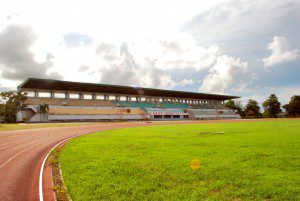
METRO NAGA SPORTS COMPLEX
This sports facility sprawling in the middle of vast greenery of Barangay Pacol, has Olympic-sized swimming pools, tennis courts, and a track oval shrouded by early morning mountain mist. It has hosted a number of local and national sports competitions including the yearly Palarong Pambansa.
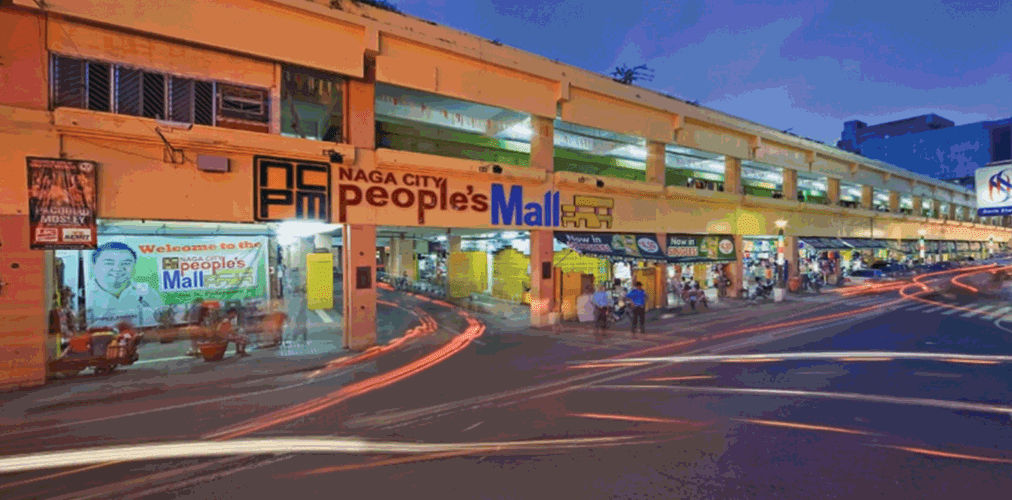
NAGA CITY PEOPLE’S MALL
The largest public structure in Asia when it was constructed in the 1970’s, the Naga City People’s Mall (NCPM) houses thousands of stalls offering products ranging from fresh fish to souvenir items. It’s total floor area of 30,000 square meters, spread over three levels, is frequented by local shoppers. Local products and souvenir items are sold at competitive prices.
Photo credits: Bong Bajo, Stephen Prestado

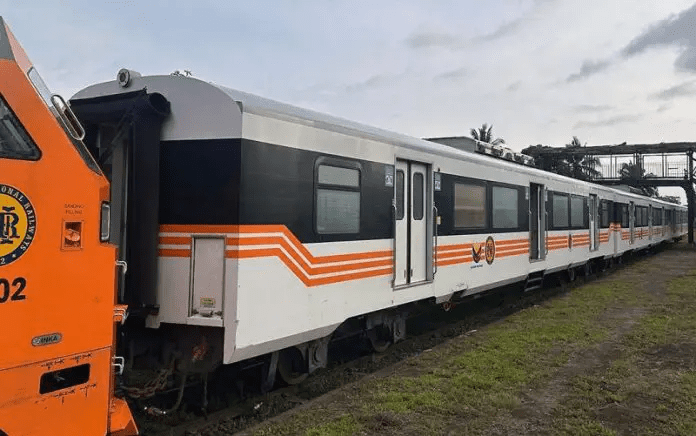
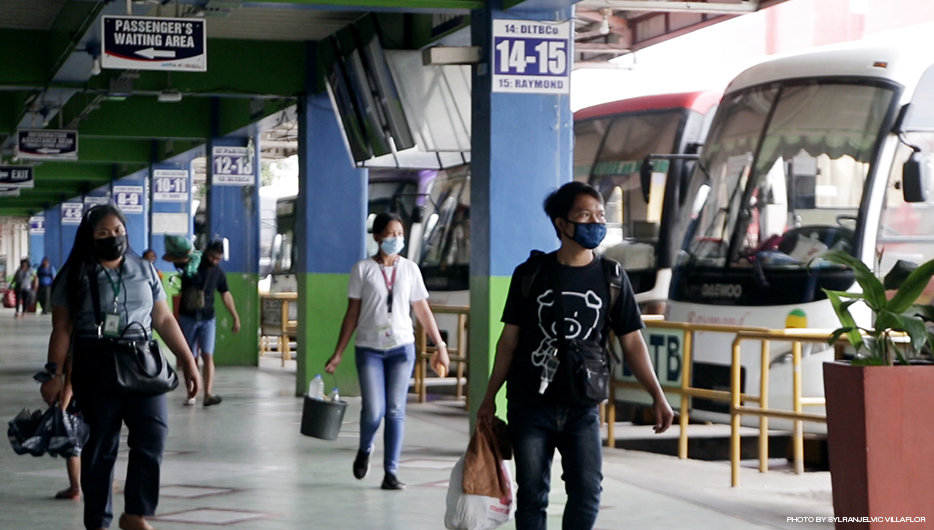
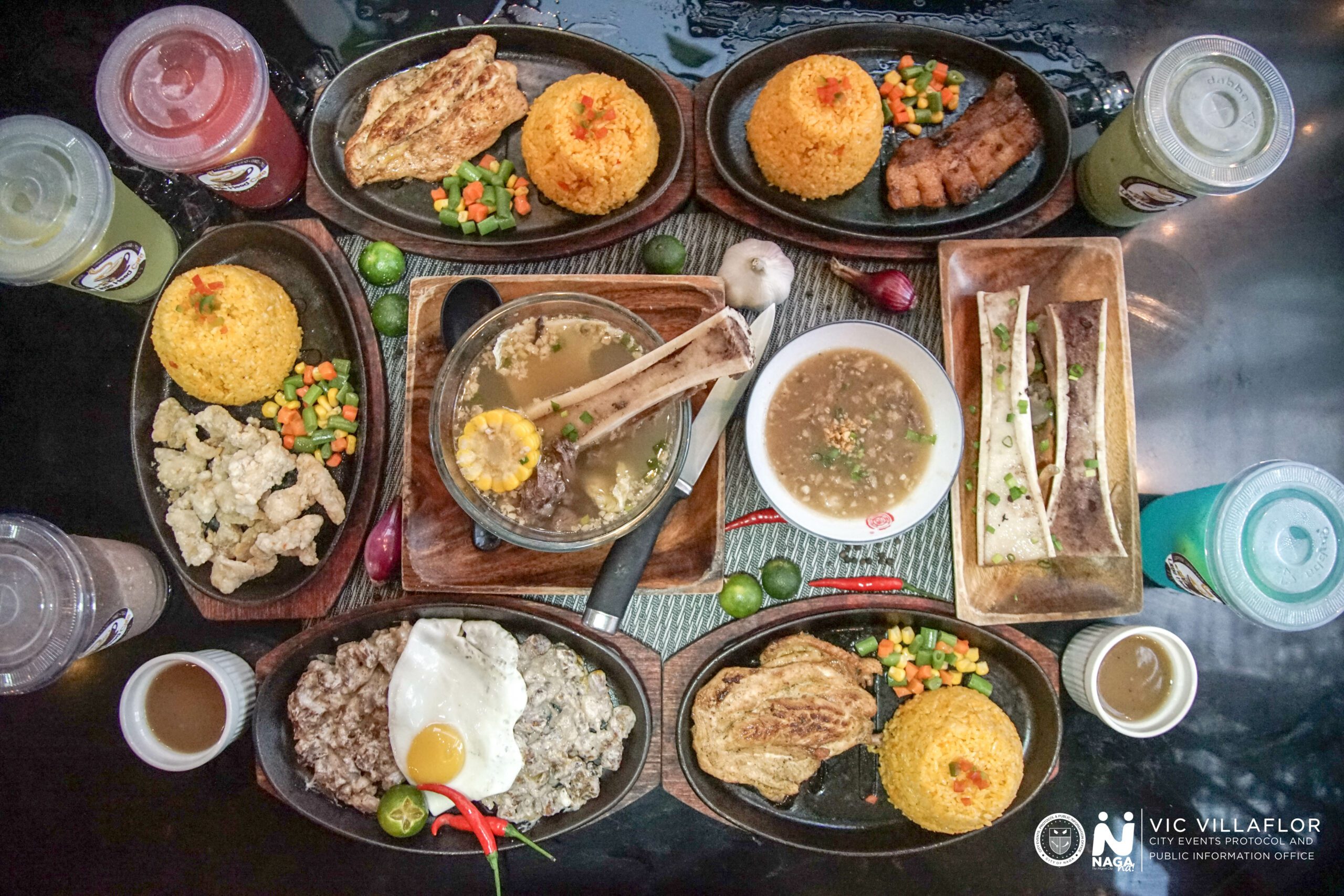
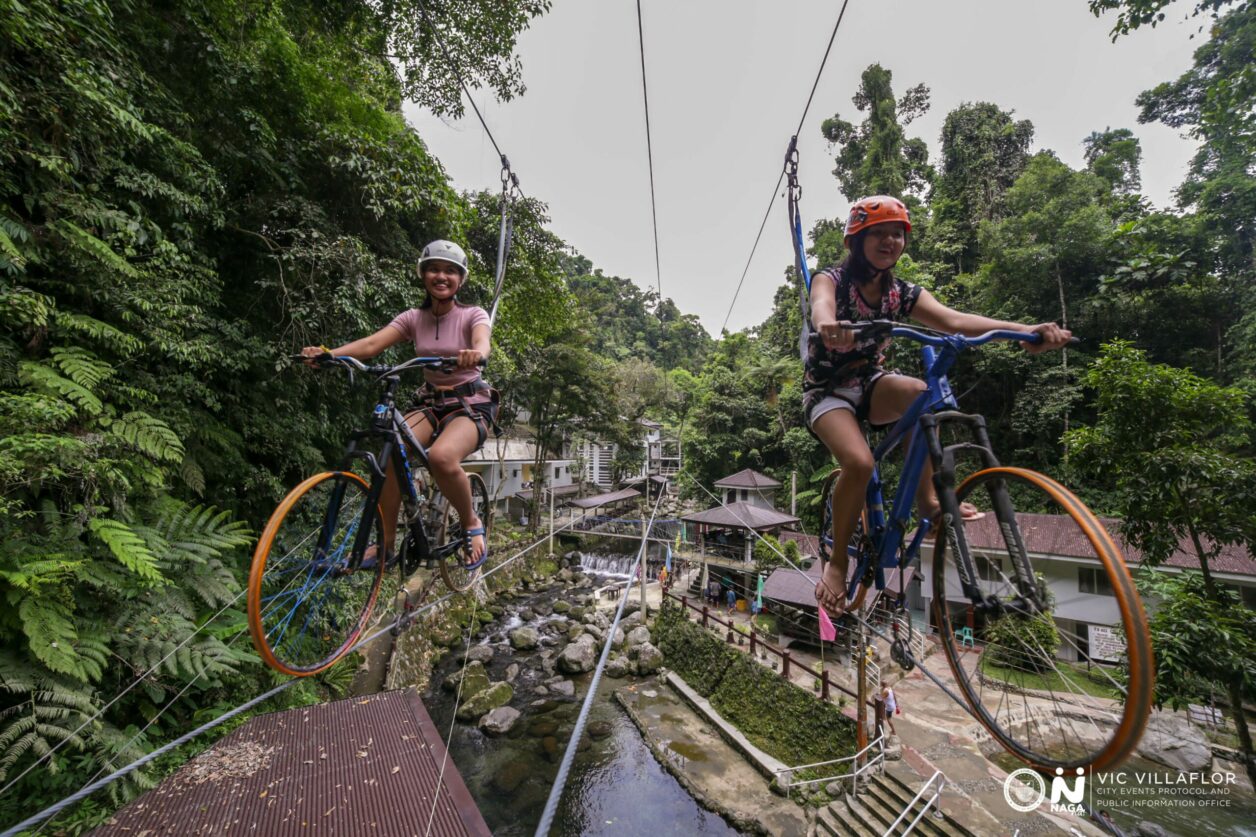
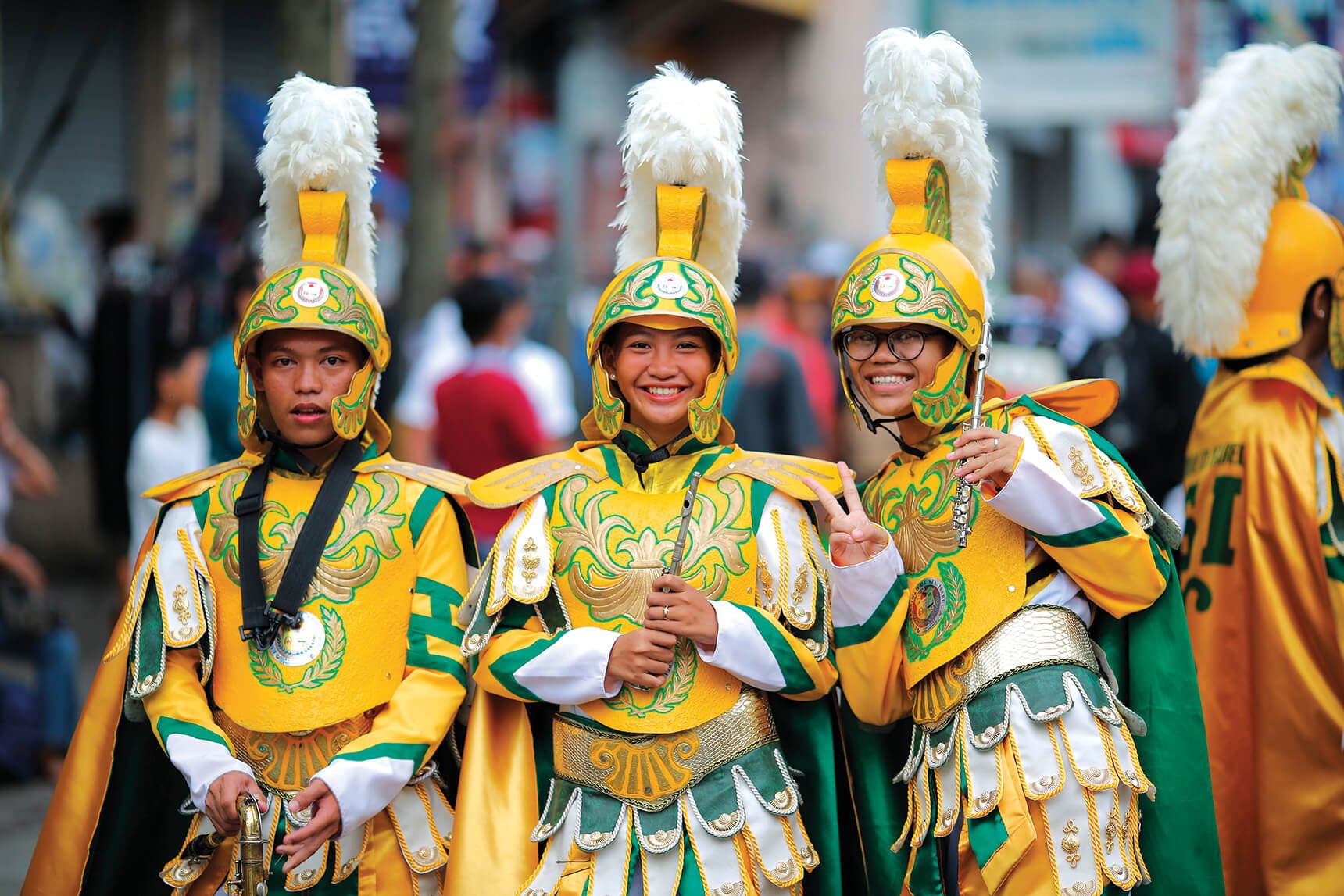
[…] its impressive appearance, who would believe that this church’s infirmary and basement served as interrogation and torture halls of Filipinos who were arrested during the peak of the Filipino-Spanish […]